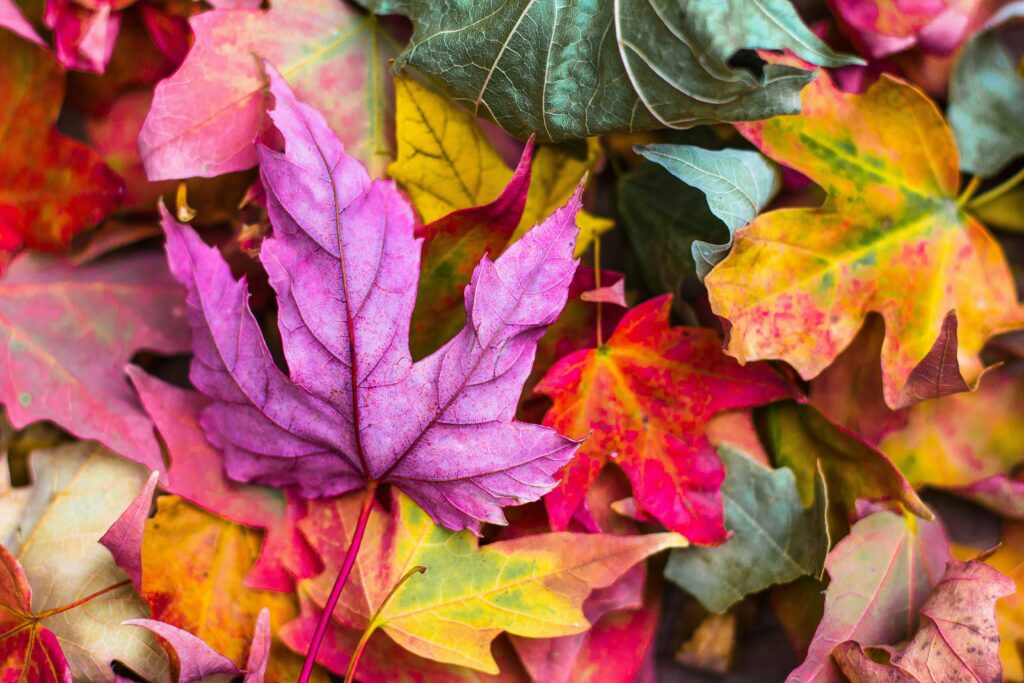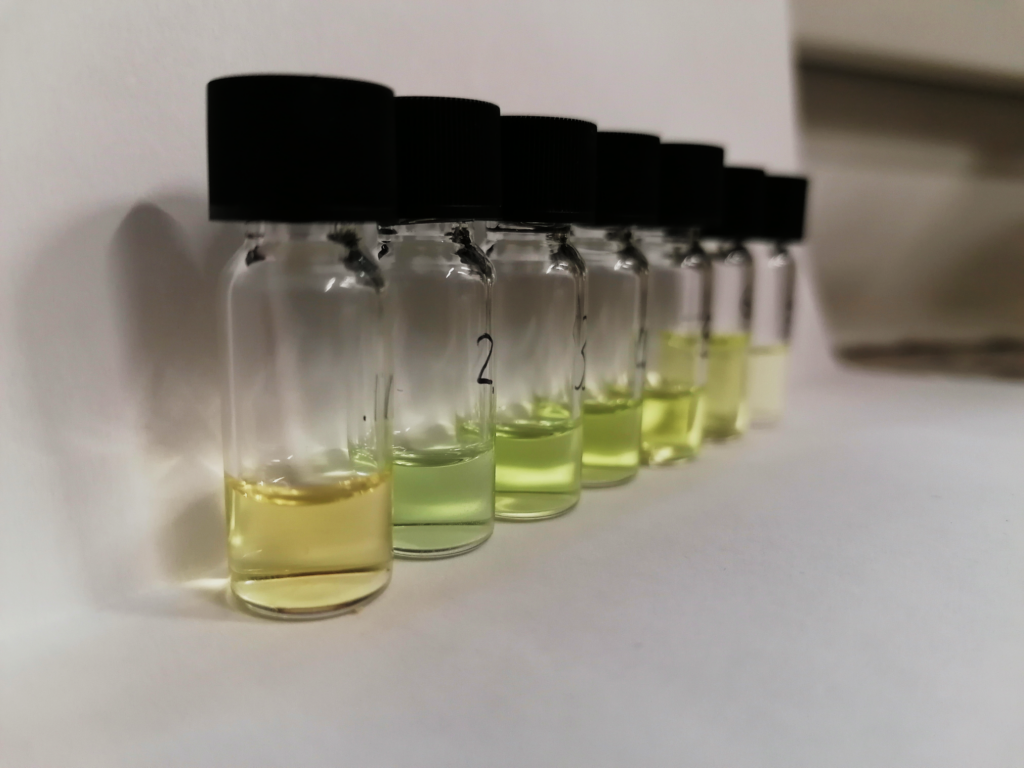121 years of chromatography

In 1903, exactly 121 years ago, the botanist Michail Zwet discovered that the green plant pigment chlorophyll is made up of several pigments. He added a chlorophyll extract to a column filled with inulin and constantly topped up with light petrol. As the pigments moved through the column at different speeds due to different interactions, they separated and Zwet recognised the individual dyes.
Since then, chromatography, or writing (Greek: graphein) with colour (Greek: chroma), has been a standard method in many laboratories. Of course, Zwets’ column chromatography can no longer keep up with the performance of modern chromatographs, but he laid the foundation for numerous separation methods.
Together with our FÖJ student Oli, we recreated the colourful experiment and brought autumn into our laboratory. We were actually able to isolate various dyes that are responsible for the colouring of the leaves.
In our team, we analyse samples using ion chromatography and gas chromatography, among other methods. This makes it possible, for example, to determine disinfection by-products or mineral oil hydrocarbons. Using state-of-the-art detectors, we can recognise even the smallest traces and take the necessary steps to ensure that the quality of our water is constantly guaranteed.

